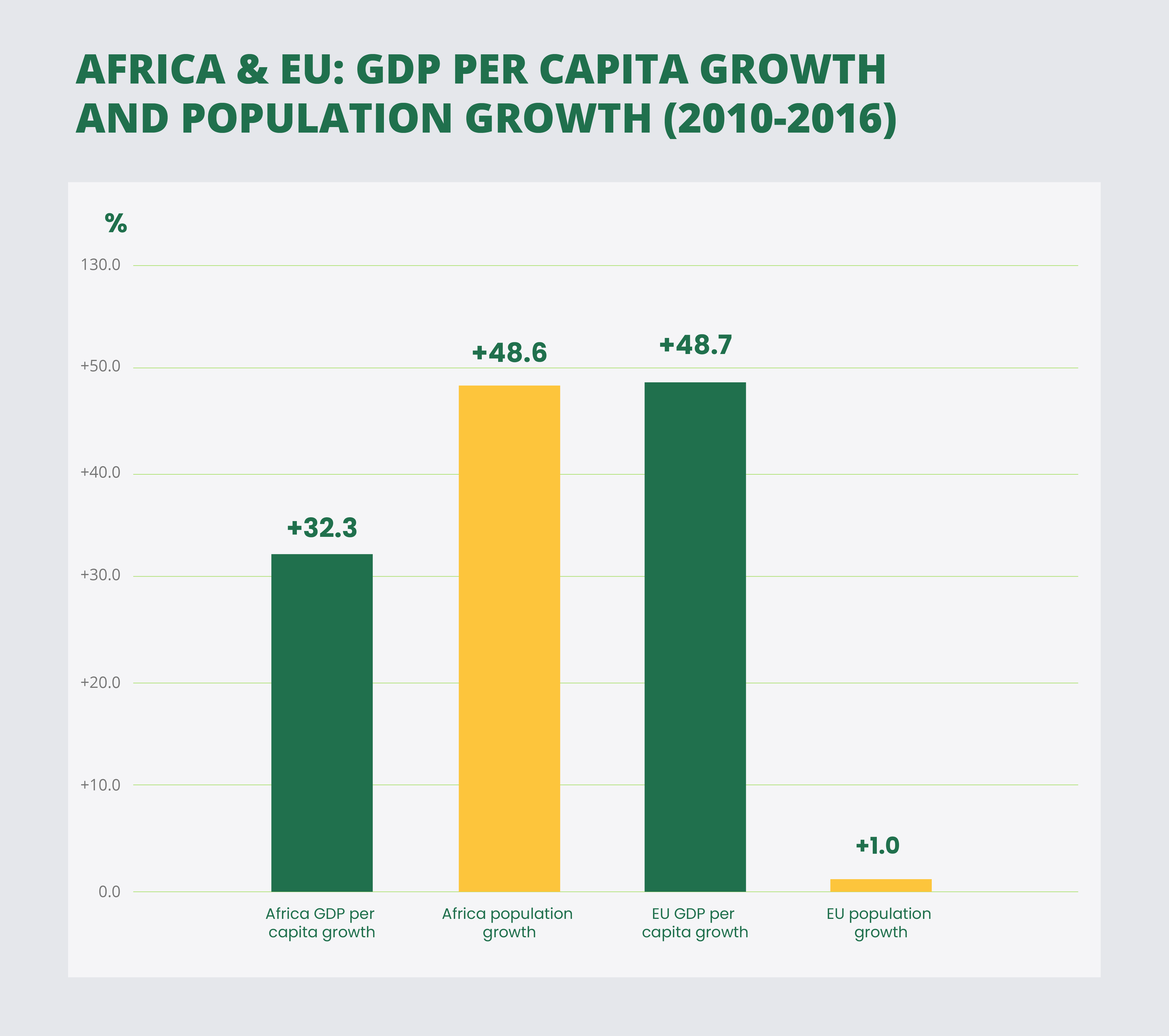- Youth
Migration and Mobility: The need to think and act differently

‘The data for this story were compiled and visualised by the Mo Ibrahim Foundation. View more here.’
Migrations are a key component of global history – but there is no 21st Century hike. Indeed, over the past 30 years, migration has increased, but not at the same rate as the global population.
The majority of African migrants move within their own continent. Most are economic migrations, driven by the search for better prospects.
In Europe, which hosts eight out of the ten least accepting countries when it comes to migration, migrants continue to form a substantial proportion of those who work in health and care services.
Related content
27.2%
27.2% of African migrants live in Europe.
12.7%
12.7% of all migrants in Europe are African.
Despite common narratives, Africa is not a continent of mass exodus and African migrants are not overwhelming Europe.
The biggest driver of migration from Africa to Europe is the search for greater economic opportunity
Though important, Africa’s economic growth of the last decade has been mainly jobless.
- African youth consider unemployment by far the most important problem that their governments need to address.
By 2030, 30 million youth are expected to enter the African labour market each year.
- In sub-Saharan Africa alone, while 18 million new jobs are needed annually to absorb new entries in the labour market, only 3 million are currently being created.
"Poverty will remain the main reason for why people want to flee and move elsewhere. Only 220-250 million jobs will be created in Africa up to 2050, this is where our efforts should go – providing jobs. But this is feasible," – Jean Michel Severino.
“Poverty will remain the main reason for why people want to flee and move elsewhere. Only 220-250 million jobs will be created in Africa up to 2050, this is where our efforts should go – providing jobs. But this is feasible.”


Debates about “migration” should really be about “mobility”.
Aiming purely to prevent migration will only drive the use of more irregular and dangerous parallel routes.
In 2016, migrant smugglers' income worldwide was estimated at up to $7 billion, which is equivalent to the EU humanitarian aid in the same year.
In 2019, there was an estimated revenue of at least €70 million for smugglers along the Western and Central Mediterranean routes.
3%
Only 3% of the African population live outside their home country.
8.5%
Compared to 8.5% of the European population living outside their home country.
There is still a lot to be done to facilitate and better organise mobility within the continent.
The launch of the African Continental Free Trade Area (AfCFTA) in January 2021 is a key step forward, but it must be accompanied by progress in other African initiatives such as the Protocol on the Free Movement of Persons.
So far, only four countries (Mali, Niger, Rwanda, São Tomé and Príncipe) have ratified this Protocol.
ECOWAS is currently the only REC whose citizens can travel visa-free to all countries in the region.
Only nine African countries request no visa or just visa on arrival for all African citizens.
“When people can get jobs and move and do business in neighbouring countries - that will create a certain level of economic welfare, and people will be comfortable staying in their country and will be happy to move from one country to another” – Bernard Gustin, Co-Chair of the Africa-Europe Foundation Strategy Group on Transport and Connectivity
“When people can get jobs and move and do business in neighbouring countries - that will create a certain level of economic welfare, and people will be comfortable staying in their country and will be happy to move from one country to another.”
Africa’s intracontinental transport network is still very insufficient for supporting mobility.
With around 204 km per 1,000 km2, of which only one-quarter are paved, Africa’s road network lags far behind the world average (944 km per 1,000 km2, more than half of which paved).
In 2018, only five African countries had direct flights connecting to 20 or more other African countries: Ethiopia, Kenya, Morocco, Nigeria and South Africa.
EU citizens can look for a job and work in any other EU country without a work permit, reside in any other EU country and enjoy equal treatment with regards to working and social rights.
For many businesses in Africa, it is often easier to employ a skilled non- African expatriate than a skilled African expatriate.
“We need new thinking and action to give us the results we want. To make progress we must correctly diagnose the root cause of migration, and the most important driver is the imbalance in human capital opportunities between our two continents.” – Paul Kagame, President of Rwanda
“We need new thinking and action to give us the results we want. To make progress we must correctly diagnose the root cause of migration, and the most important driver is the imbalance in human capital opportunities between our two continents.”